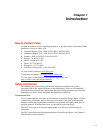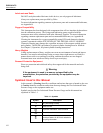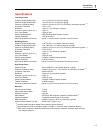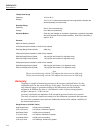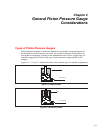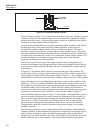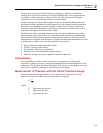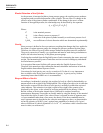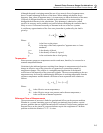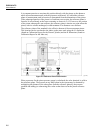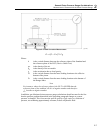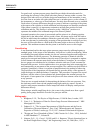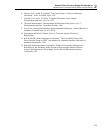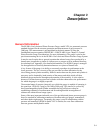
RUSKA 2470
Users Manual
2-4
Elastic Distortion of the Cylinder
As the pressure is increased within a piston pressure gauge, the resulting stress produces
a temporary and reversible deformation of the cylinder. The net effect is a change in the
effective area of the piston-cylinder combination. If the change in the area is a linear
function of the applied pressure, the relationship may be described by the equation:
()
2
210
1 PbPbAA
e
++=
Where:
P
is the nominal pressure
e
A is the effective area at a pressure, P
0
A is the area of the piston-cylinder assembly at a reference pressure level
21
& bb are coefficients of elastic distortion which are determined experimentally
Gravity
Since pressure is defined as force per unit area, anything that changes the force applied to
the piston of a piston pressure gauge also changes the pressure produced by that gauge.
Therefore, the effects of gravity on the masses loaded on the piston must be considered.
The gravity correction is usually very significant and must be used during calculations to
achieve the advertised accuracy of the piston pressure gauge.
Confusion has resulted from the English System of units concerning the terms, mass and
weight. The International System of units does not leave room for ambiguity and should
be used whenever possible.
It is recognized that some facilities still operate under the English System of units.
Therefore, this manual provides calibration data and calculation instructions in both the
English and the International System of units.
Corrections for local gravity can vary by as much as 0.5% thus it is very important to
have a reliable value for the local acceleration of gravity. A gravity survey with an
uncertainty better than 0.00001 m/s
2
is recommended.
Buoyant Effect of the Air
According to Archimedes's principle, the weight of a body in a fluid is diminished by an
amount equal to the weight of the fluid displaced. The weight of an object (in air) that has
had its mass corrected for the effects of local gravity is actually less than that corrected
value indicates. This reduction in weight is equal to the weight of the quantity of air
displaced by the object, or the volume of an object multiplied by the density of the air.
But the volume of an irregular shaped object is difficult to compute from direct
measurement. Buoyancy corrections are usually made by using the density of the material
from which the object is made. If the value of mass is reported in units of apparent mass
vs. brass standards rather than of true mass, the density of the brass standards must be
used. Apparent mass is described as the value the mass appears to have, as determined in
air having a density of 0.0012 g/cm³, against brass standards of a density of 8.4 g/cm³,
whose coefficient of cubical expansion is 5.4 x 10
-5
/ ºC, and whose value is based on true
mass in value (see reference 4).




